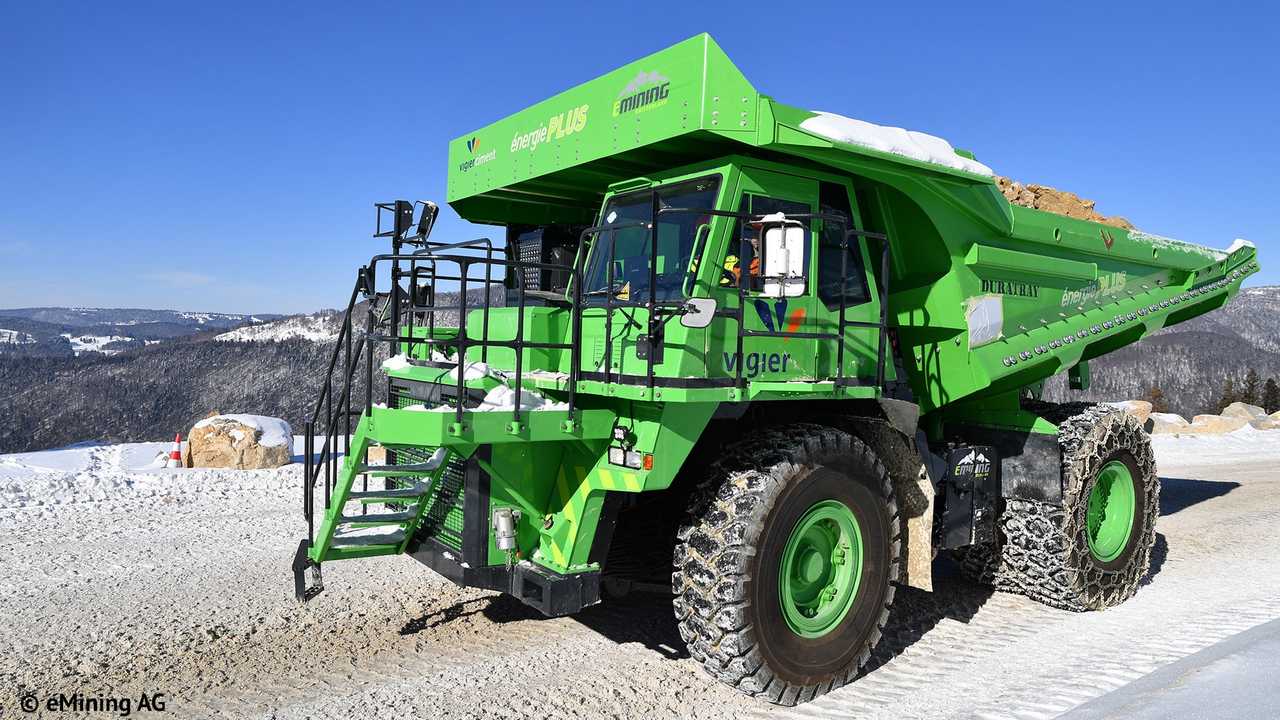No one commenting on the fact that the first paragraph says it doesn’t even CONSUME energy???
I think it’s clear they are sensationalizing it due to the unique nature of the energy used, which is external potential energy that needed to get down the hill whether it’s a gas or electric truck.
“World’s largest EV”
Blatantly untrue. Larger EVs have been in use for more than a century at this point in the form of EMU trains.
Bagger 288 is also electrically driven. Even if it is connected by cable to a nearby powerplant.
The emus have trains now?!
Yeah we’re proper fucked tbh
Marl is an earthy material rich in carbonate minerals, clays, and silt. When hardened into rock, this becomes marlstone. It is formed in marine or freshwater environments, often through the activities of algae.
You just toss it when the battery dies and get a new one.
Just like a vape stick.
Perfection is the enemy of the good; climate change is even worse.
Cool EV bruh, but can the horn make a fart noise?
This is very fucking cool.
They must be hauling the load downhill, what about the ones that hauls the load up from an open-pit mine?
Does it discharge extra energy into anything else? Does it burn off extra energy as heat to maintain regenerative braking?
It powers a massage chair for the driver
Great question.
That is definitely one of the big caveats of BEVs over diesels. A battery on an EV can only take in so much energy. Once you hit that ceiling, the battery won’t take in any more current. Fun fact, having a super charged battery in a BEV causes all sorts of headache and can cost you performance.
You either have to switch back to service brakes or, as you mentioned, burn off energy as heat. Not sure how they’re doing it with this truck, but on other BEV loaders which I’ve worked on, we add a hydraulic valve whose only purpose is to create flow, pressure, and subsequently heat. It basically just adds a dummy load. I suspect they tapped into the dump hydraulics and added such a valve for this truck.
Back in my day we drove back and forth to work uphill, both ways, and we only lost weight because we could never afford enough Starbucks and avocado toast!
I hope OpenTTD devs consider adding gravity-based electric transportation of heavy loads as an option
I’m no phycisist but I’d bet that the claim “it consumes no energy” is almost certainly false. I get what they mean but this isn’t exactly a honest way to describe it.
Strictly speaking, the energy it consumes is the gravitational potential energy of the ore they’re mining, which would be consumed anyway in the form of, well, gravity, acting on the ore on the way down. They’re just using it productively instead of dissipating it as heat from the brakes. Using only energy that ordinarily would have been wasted is of course very neat, but it’s not breaking any laws of physics.
energy is converted and never destroyed so it’s true
2017
At 50 tons and 700 kilowatt-hours, this truck is the biggest EV in the world Each round trip will generate 10kWh of spare electricity for the grid.
Amateurs.

The 1963 Černý Důl – Kunčice nad Labem aerial ropeway is over 8 km (5 mi) long, over 30 m high in places and carries 135 tons of limestone every hour from a quarry to the nearest train station. Its 120kW 3-phase synchronous motor requires power for a few minutes at the start and end of each day when most of the 800kg-capacity trolleys are empty, and spends most of the shift generating mains electricity and acting as a speed governor. Unlike the EV, it is fully autonomous most of the way, only 5 people are required to operate it including loading and unloading. The quarry will continue operation as long as it pays off, then the ropeway will be scrapped (projected 2033). A dude illegally rode the way up on it somewhat recently.
I wouldn’t be surprised if there are electrified railway lines doing the same. Regenerate large amounts of energy into the grid while descending loaded; consume a relatively small amount of energy to haul the empty train back uphill.
An early version of the Petřín ropeway in Prague used to contain tanks in both cars. The upper one would be filled with
sewagecollected rainwater from the city’s hilltop quarter and the energy of the descent was used to pull the other car up. Additionally, the way up cost twice as much so there was an incentive to ascend on foot, which was about as fast despite the incline.Most mines are underground so for most this can’t work, but where it does they are sure to use it.
Regular trains don’t run underground. Lots of opencast mines exist .
Basically all mines have an above ground terminal where whatever you mined is unloaded from your underground trains, lifts, haul trucks or whatever else onto storage piles, then loaded onto the actual long distance trains.
If the mine entry is up a mountain, then the trip down from that point will be a net energy producer regardless of anything else.
I don’t know about going downhill in general, but there are some that use regenerative braking (regular braking, on flat terrain) so maybe
Oh cool they’re using the same principle the guys at Edison are using for their logging trucks on a much larger scale
Esisyphus









